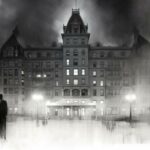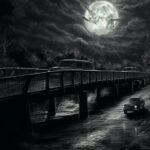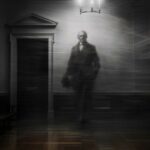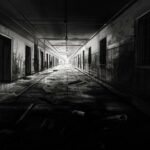Table of Contents
Detroit harbors a chilling past, with eerie tales woven into the fabric of its historic buildings and shadowy streets. Bold adventurers and paranormal enthusiasts alike are drawn to the Motor City’s most haunted locations, where whispers of the past echo and ghostly presences linger. Here is a compilation of 13 haunted, creepy, and spooky places in Detroit for those brave enough to confront the city’s spectral residents.
If you are doing any kind of paranormal investigation here, you might want to take a look at our ghost hunting equipment list. Locations like this get a reputation because they are high activity and you don’t need much to see for yourself.
Historic Fort Wayne

Historic Fort Wayne, nestled in Detroit, Michigan, stands as a monument to the past, its history steeped in tales of valor and the echoes of bygone eras. But when night falls, some say the old walls whisper with more than just the winds of history. The fort, a sentinel watching over the Detroit River since the 1840s, has garnered a reputation for being haunted, sending shivers down the spines of visitors who dare to explore its grounds after dark.
The tales are as old as the fort itself, with stories of spirits that can’t seem to leave their military past behind. The most prominent among these specters is the figure of a lonely soldier, often spotted in the old barracks. He’s said to roam the rooms, his ethereal presence a stark reminder of the living soldiers who once called this fort home.
Another ghostly inhabitant includes the weeping woman, believed to be the spirit of a grieving lover or mother. Her sobs are said to pierce the night, a heartbreaking sound that resonates with the sorrow of loss and unending separation. Visitors report feeling a chill in the air when her lamentations are heard, a reminder that love and loss are as eternal as the afterlife.
In the heart of the fort lies the old Star Fort, its star-shaped design a unique architectural feature and a hotbed for supernatural activity. It’s here that the shadowy figures are often seen flitting through the darkness, perhaps the residual energy of soldiers standing guard over a territory that no longer needs defending.
The presence of a mysterious orb has also been reported, a glowing specter that hovers silently before vanishing into thin air. This unexplained phenomenon adds to the fort’s enigmatic allure, beckoning the brave to seek out its origin.
Whispers among the locals tell of a disembodied voice that commands attention, often heard barking orders in the dead of night. This spectral sergeant seems to be stuck in a time loop, forever leading his invisible troops.
Fort Wayne’s haunted history is not just a few stray tales; it’s a patchwork quilt of eerie encounters, each thread woven with the whispers of the past. As a keeper of history and mystery, the fort invites the curious to walk its hallowed grounds. But be warned, for you may walk alongside those who once lived—and some say, still linger—in this storied place.
Whether you’re a ghost hunter, a history enthusiast, or simply in for a spine-tingling adventure, Historic Fort Wayne is a place where the past is always present, and the ghosts of yesteryear refuse to be forgotten.
I was walking by the old barracks when I saw a soldier’s ghost just standing there, looking all sad and lost, like he couldn’t find his way home. Then, by the water’s edge, I heard this lady crying like her heart was broken, and it gave me the creeps big time.
United Community Hospital

The United Community Hospital in Detroit, Michigan, carries a haunted reputation that chills to the bone. This eerie edifice, once a bustling center of healing, now lies in dilapidated silence, its hallways echoing with the ghostly remnants of its past. The hospital, with its modern 1970s architecture, opened its doors with the noble intention of bridging the racial healthcare gap that marred the medical landscape through the 1960s. However, despite its progressive beginnings, the United Community Hospital became a house of horrors for many.
As the years rolled on, whispers of the inexplicable began to circulate. Staff and patients reported spine-tingling encounters with apparitions and unexplainable phenomena. The hospital’s walls, which should have stood as a bastion of hope and recovery, instead seemed to absorb the despair and pain of those who passed through its doors.
In its heyday, the hospital was a bustling hub, a lifeline for the community it served. But as the tides of fortune turned, the once-thriving hospital found itself gasping for survival. Funding dwindled, and the hospital’s condition deteriorated, leaving it a shadow of its former self. Eventually, the United Community Hospital shuttered its doors, but it seems not all of its occupants were ready to leave.
Explorers who dare to tread its abandoned corridors today speak of an oppressive atmosphere, as if the air itself is heavy with sorrow. They tell tales of sudden drops in temperature and the feeling of being watched by unseen eyes. Some have even reported hearing the anguished cries of patients long gone, their pleas for help falling on deaf ears.
The hospital became a tomb of secrets, with dangerous medical waste and piles of confidential patient records left behind like forgotten relics. These remnants serve as a grim reminder of the lives that once intertwined within the hospital’s now-crumbling walls.
It’s said that the past clings to the United Community Hospital like a specter, refusing to be laid to rest. Those who have witnessed the hospital’s haunting presence attest that it’s not just the building that’s abandoned, but hope itself seems to have fled from this place of despair. The hospital stands not just as a physical structure, but as a synecdoche for neglect and the ghosts of a community’s forgotten health.
In the end, the United Community Hospital remains a chilling enigma, its stories of hauntings and horror etched into the annals of Detroit’s urban legends. Bold souls continue to seek the thrills within its walls, hoping for a brush with the supernatural, while the hospital silently awaits its fate, a ghostly sentinel in a city of change.
I heard from folks around Detroit that the old United Community Hospital is straight-up haunted, man. They say if you walk down those creepy, empty halls, you might see ghostly figures or hear weird noises that’ll make your skin crawl.
The Whitney
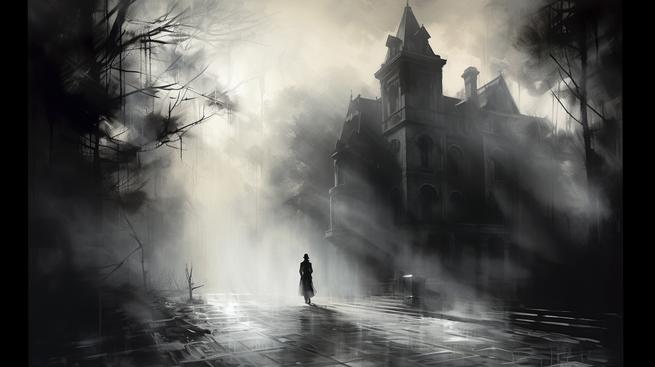
The Whitney, a grandiose mansion nestled in the heart of Detroit, Michigan, stands as a testament to both luxury and mystery. Built by lumber magnate David Whitney Jr. from 1890 to 1894, the opulent residence now harbors tales that send shivers down the spine. The whispers around town tell of the mansion’s spectral residents, with David Whitney himself and his first wife, Flora, at the center of the ghostly lore.
According to local legend, Flora Whitney had her heart set on living life large in an extravagant home. However, fate played a cruel hand, snatching her away before the mansion’s completion. Her untimely death left David Whitney to pick up the pieces, raising their four children solo. A year after bidding farewell to Flora, David Whitney crossed the great divide, leaving the mansion without its master and mistress.
The walls of The Whitney, if they could talk, would spin yarns of the couple’s unfulfilled dreams and lingering presence. Visitors and staff often report eerie encounters and inexplicable occurrences that suggest the couple’s spirits have taken the mansion as their eternal abode.
Diners seeking both a taste of history and a brush with the supernatural can reserve a table at The Whitney, which has since been transformed into a fine dining restaurant. The establishment embraces its haunted reputation, offering patrons not only a feast for the stomach but also a feast for the soul, should they dare to encounter the mansion’s ghostly denizens.
As the sun sets and the moon casts its silvery glow over Detroit, the shadows within The Whitney grow long, and the air turns thick with tales of the past. The mansion, more than just a house, serves as a gateway to the realm of spirits, a place where the line between the living and the dead blurs, and the echoes of bygone eras resonate through its hallowed halls.
I’ve heard folks say the old Whitney mansion in Detroit is haunted by the original owner and his wife, who died before the place was even finished. Some nights, you can catch glimpses of their ghosts wandering the halls, still hanging around their dream home.
Masonic Temple

The Masonic Temple in Detroit, Michigan, stands as a towering testament to the city’s architectural grandeur and its more mysterious past. Designed by the celebrated George D. Mason, this Gothic colossus holds secrets and stories within its walls, earning it a reputation for being haunted.
Legend whispers through the halls of the world’s largest Masonic Temple, where echoes of the otherworldly are as intricate as its stonework. Some say the spirit of George D. Mason himself wanders the corridors, unable to part with his magnum opus. His apparition reportedly lingers, overseeing the legacy of his labor—a spectral custodian eternally bound to his creation.
The temple’s labyrinthine layout, with its myriad of rooms and secret passageways, serves as the perfect backdrop for tales of the supernatural. Visitors and staff alike have recounted unnerving experiences, from unexplained footsteps to the feeling of being watched by unseen eyes. It’s as if the very walls have ears, absorbing each whisper and wail of its spectral inhabitants.
In the dead of night, the Masonic Temple transforms into a playground for the paranormal. The cloak of darkness amplifies every creak and groan of the aging edifice, each sound a potential communication from the world beyond. The temple’s storied history casts a long shadow, giving rise to chilling accounts that send shivers down the spines of thrill-seekers and history buffs alike.
The temple’s haunted history is not just an idle yarn spun to entertain—it has become an integral part of Detroit’s cultural fabric. As a city that has faced its own ghosts of industry and time, Detroit embraces these spectral stories, with the Masonic Temple standing as a proud, albeit eerie, symbol of its resilience.
Whether driven by a morbid curiosity or a genuine encounter with the supernatural, the haunted history of the Masonic Temple remains a cornerstone of Detroit’s rich tapestry of urban legends. It is a place where the past refuses to be silent, and where the line between the living and the dead is as fine as the mason’s chisel.
I was walking down one of the Temple’s long, dimly lit corridors when I heard the unmistakable sound of footsteps trailing behind me, but when I turned around, nobody was there. It totally gave me the creeps, like old George Mason himself was keeping an eye on me.
The Majestic Theatre
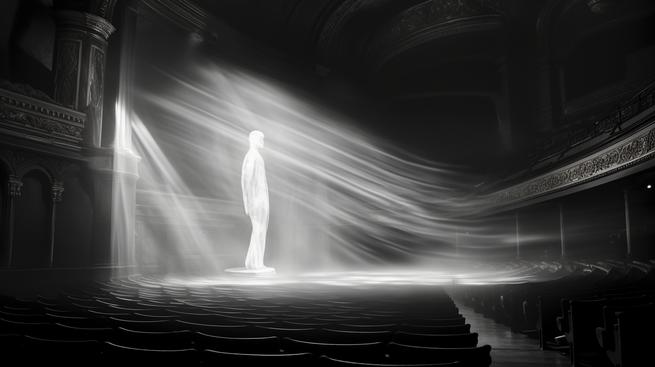
The Majestic Theatre in Detroit, Michigan, holds more than just a legacy of live performances and cinematic shows; it’s a vault of ghostly tales that raise the hairs on the back of one’s neck. Nestled in the heart of the city, the theatre has been a beacon of entertainment since its grand opening in 1915, but it’s the after-hours that have given rise to whispers of the supernatural.
According to local lore, when the spotlight fades and the curtains fall, the Majestic transforms into a playground for the spectral. Employees and visitors alike have reported eerie encounters with apparitions that refuse to take their final bow. The most famed of these phantoms is said to be a former stagehand, who, even in death, cannot seem to part with the grandeur of the stage. His ghostly presence is often sensed in the wings, where the air turns cold and the inexplicable sound of footsteps echoes in the empty theatre.
The Majestic Theatre, with a century under its belt, is more than just bricks and mortar; it’s a tapestry of history, woven with stories of the past. Some say the echoes of bygone eras linger, with the spirits of performers and patrons still clinging to the world of the living. These otherworldly inhabitants make the theatre a magnet for those who chase the chill of a good scare, turning the Majestic into a cornerstone of Detroit’s haunted folklore.
Whether it’s the flicker of lights with no earthly explanation or the whisper of voices when silence should reign, the Majestic Theatre stands as a testament to the city’s love affair with the eerie and the unexplainable. It’s a place where the veil between this world and the next seems thinner, and every creak and groan of the old building might just be a greeting from the other side. Visitors hoping to catch a glimpse of the theatre’s ghostly cast are often left with nothing but the spine-tingling sensation that they are not alone in the audience.
In the world of the paranormal, the Majestic Theatre is a star attraction, its haunted reputation shining as brightly as any marquee. For thrill-seekers and lovers of lore, the theatre is a must-see destination, where the past lingers and the stories of restless spirits take center stage.
I was closing up at the Majestic one night and felt this chill, like someone was watching me, then I heard footsteps on the stage, but nobody was there, man, it was spooky.
Fort Shelby Hotel
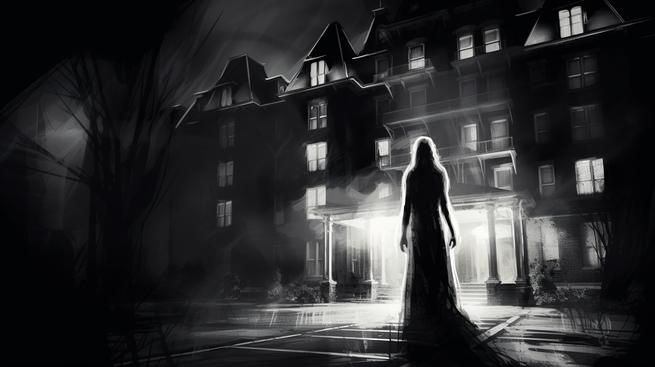
The Fort Shelby Hotel in Detroit, Michigan, stands as a towering testament to both historical grandeur and eerie legends. Originally opened in 1917, the hotel has weathered the storm of time, witnessing the ebb and flow of Detroit’s fortunes. Among the many chapters of its storied past, the Fort Shelby is particularly known for whispers of ghostly encounters, making it a magnet for those intrigued by the paranormal.
The hotel’s haunted history is said to weave a tapestry rich with spectral sightings and unexplained phenomena. Guests and staff alike have reported eerie occurrences, such as disembodied footsteps echoing through the halls, doors slamming shut with no one in sight, and even the occasional glimpse of apparitions. The most famous ghost believed to roam the premises is that of a woman, allegedly seen in the ballroom and in the halls, her presence marked by a sudden chill in the air and a fleeting shadow passing by.
The Fort Shelby’s spectral residents are not the only characters in its narrative. The hotel has been a silent witness to Detroit’s roaring ’20s, the crushing blow of the Great Depression, and the city’s eventual resurgence. Its walls are a veritable treasure trove of stories, with each creak and groan adding to the ambiance that fuels the legend of its haunting.
After falling into disrepair, the Fort Shelby found new life through a significant renovation, reopening in 2008 as part of the DoubleTree by Hilton chain. The revival of the building breathed fresh air into its lungs, yet the ghosts of the past were not so easily dispelled. The hotel’s haunted reputation has only grown, making it an intriguing destination for those seeking a brush with the supernatural.
Today, the Fort Shelby Hotel stands proud, a beacon in Detroit’s skyline, its history a complex web of luxury, decline, and rebirth. Whether or not the spirits of yesteryear truly wander its corridors, the Fort Shelby will always be a place where the past is never truly gone, and the echoes of yesteryear are just a whisper away. Visitors looking for a touch of the paranormal wrapped in historic charm may find their curiosity rewarded with a stay at this 104-year-old hotel, where the stories are as rich as the history and the ghosts may be waiting to make their presence known.
I stayed at the Fort Shelby Hotel and I swear I saw a ghostly lady dancing alone in the ballroom, all misty and sad. It got real cold, and then she just vanished into thin air!
Stevens T. Mason Monument
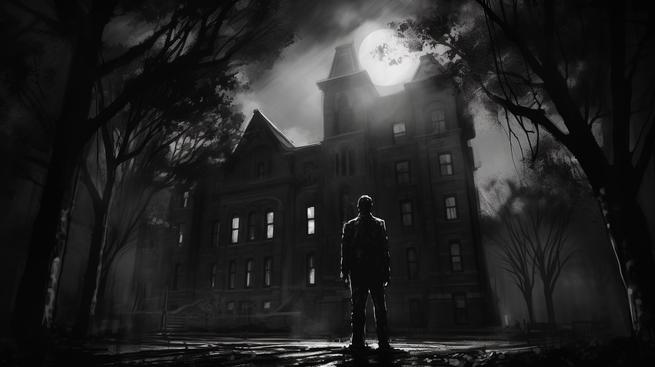
In the heart of Detroit, the monument to Stevens T. Mason, Michigan’s “Boy Governor,” stands as a testament to both history and mystery. Erected in honor of the youngest state governor in American history, the Mason Monument has long been a focal point for tales that send shivers down the spine.
Locals whisper that Mason’s spirit is not content to rest in peace. It’s said that his apparition has been spotted roaming the vicinity of his final resting place, his spectral figure casting a watchful eye over the city he once governed. Visitors often report a sudden drop in temperature and an eerie feeling that someone, or something, is watching them as they pass by the site.
The monument itself, serving as a synecdoche for Mason’s enduring legacy, has become a magnet for ghost hunters and the supernaturally curious. Stories circulate among the bravest of souls who dare to visit after dark, claiming that Mason’s ghost has unfinished business, perhaps tied to the turbulent times and youthful vigor that marked his governance.
Mason’s untimely death at the age of 31 only fuels the ghostly lore, as if the monument holds a piece of his restless spirit. The statue, standing tall and proud, seems to echo the indomitable will of the man it represents, refusing to fade into the annals of history quietly.
While no concrete evidence has confirmed the paranormal activity, the legend of Stevens T. Mason’s haunted monument remains an integral thread in Detroit’s rich tapestry of urban legends, serving as a reminder that some stories, just like spirits, refuse to be laid to rest.
I swear, every time I walk by the Mason Monument at night, it feels like a chill cuts right through me, like the young governor himself is out there, making sure I don’t forget he’s still around. People say they’ve seen his ghost pacing by his statue, forever keeping an eye on Detroit.





